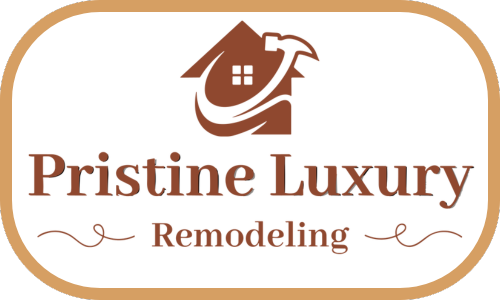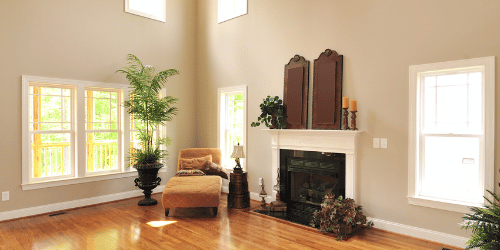Open-concept spaces have become increasingly popular in modern homes. They offer a sense of spaciousness, promote natural light flow, and encourage social interaction. However, designing a cohesive flooring plan for these areas requires thoughtful consideration. In this blog post, we’ll explore key strategies and practical tips to create a harmonious and functional flooring layout in open-concept spaces.
A well-designed flooring plan enhances the overall flow, visual appeal, and functionality of open-concept spaces. By carefully selecting materials, colors, and transitions, you can achieve a seamless look that ties different areas together.
Choosing the Right Flooring Materials
Consistency vs. Variety:
While uniform flooring throughout the house creates cohesion and a seamless look, mixing different materials can add character and interest to your space. Consider incorporating a variety of flooring options such as hardwood for its warmth and classic appeal, tile for its durability and versatility, or luxury vinyl plank (LVP) for its resilience and contemporary style. Each material offers distinct advantages in terms of durability, maintenance, and aesthetic appeal, allowing you to tailor your flooring choices to different areas of your home based on their specific needs and visual impact. By thoughtfully combining these materials, you can create unique, functional, and visually engaging spaces that reflect your personal style.
Transition Zones
Use transition strips or thresholds to delineate different zones, such as the kitchen, living room, and dining area. These transitions create a visual break between distinct flooring materials or spaces without disrupting the overall flow of the room. Transition strips help smoothly bridge gaps and provide a finished look where different flooring types meet. They also protect the edges of the flooring and can help accommodate slight height differences between materials. By incorporating well-chosen transition strips or thresholds, you can enhance the design and functionality of your flooring while maintaining a cohesive and aesthetically pleasing environment.
Consider Comfort
In high-traffic areas, opt for comfortable flooring materials that provide cushioning and warmth, such as carpet or cork. Carpet offers a soft, cushioned surface that helps reduce noise and provides comfort underfoot, making it ideal for spaces like living rooms and bedrooms. Cork flooring, known for its natural shock-absorbing properties, offers a warm and resilient surface that also helps with sound insulation. Both materials are excellent choices for areas that experience frequent foot traffic, as they enhance comfort while also contributing to a more inviting and cozy atmosphere.
Color Coordination
Color Consistency
Choose a color palette that complements your overall interior design. Neutral tones, such as beige, gray, or taupe, work well for open spaces, creating a cohesive and versatile backdrop that enhances the sense of continuity throughout your home. However, don’t be afraid to introduce subtle contrasts through accents or feature walls. Adding elements like a slightly darker or lighter shade, or incorporating soft hues that complement your main palette, can create visual interest and depth without overwhelming the space. This balanced approach allows for a harmonious design while still offering opportunities for personality and flair.
Visual Continuity
If using different flooring materials, ensure that their colors harmonize to maintain a cohesive look throughout your space. For instance, gray-toned hardwood can pair beautifully with gray porcelain tiles, creating a seamless transition between areas while preserving a unified color scheme. By selecting materials that complement each other in terms of color and tone, you can achieve a balanced and aesthetically pleasing design that enhances the overall flow of your home. This approach helps prevent stark contrasts and creates a more integrated and sophisticated appearance.
Consult a Designer or Contractor
An expert can guide you on material selection, layout, and installation techniques, ensuring that you make informed decisions for your flooring project. Their expertise helps in choosing the most suitable materials based on durability, aesthetics, and functionality. They can also assist in planning the layout to optimize space and flow, and offer professional advice on installation techniques to achieve a flawless finish. With their guidance, you can ensure that your flooring choices meet both practical needs and design goals, resulting in a well-executed and visually appealing outcome.
Creating Zones
Functional Zones
Define specific areas within the open space, such as the living, dining, and kitchen zones, using rugs, furniture placement, or changes in flooring. Rugs can anchor different sections of the room, providing visual breaks and enhancing each area’s function. Strategic furniture placement, like arranging sofas and tables in the living area and a dining table in its own space, helps to demarcate the zones effectively. Additionally, transitioning between different types of flooring materials, such as wood in the living area and tile in the kitchen, can subtly delineate these spaces while maintaining a cohesive look.
Flow Patterns
Consider the natural flow of movement when arranging your flooring. Align flooring patterns parallel to the primary traffic paths to ensure a seamless transition between different areas. This approach not only enhances the visual continuity of the space but also facilitates smoother movement, reducing potential tripping hazards and creating a more cohesive look. By orienting the flooring patterns in harmony with the flow of foot traffic, you can achieve a functional and aesthetically pleasing design that supports both the practical use and overall ambiance of your home.
Easy Cleaning
Opt for low-maintenance flooring that withstands spills and daily wear to ensure longevity and ease of care. Sealed hardwood offers durability and resistance to moisture, making it a practical choice for high-traffic areas. Stain-resistant tiles, whether ceramic or porcelain, provide a robust surface that can handle spills and heavy use without compromising on style. These flooring options not only stand up to the demands of everyday living but also simplify upkeep, allowing you to maintain a beautiful and functional home environment with minimal effort.
Practical Tips
Layout Planning
Sketch out your floor plan to visualize different zones and their layout. This helps in understanding how each area is defined and how the flooring materials will interact. Ensure that traffic paths align with flooring transitions to create a smooth flow between zones. Proper alignment of transitions with natural movement paths minimizes disruptions and enhances the overall coherence of your design, allowing for a more functional and aesthetically pleasing space. By planning these details in advance, you can ensure that the transition between different flooring materials is both practical and visually appealing.
Lighting Considerations
Lighting significantly impacts how flooring appears in your space. To maintain consistency in how your flooring looks, balance natural and artificial light sources effectively. Natural light from windows can bring out the true colors and textures of your flooring during the day, while artificial lighting, such as overhead fixtures or lamps, can influence its appearance in the evening. By thoughtfully integrating both light sources, you can ensure that the flooring maintains its intended look throughout different times of the day, enhancing the overall visual appeal and cohesion of your interior design.
Maintenance Ease
Select flooring that’s easy to clean and maintain, taking into account your lifestyle and family needs. Choose materials that can withstand daily wear and are simple to upkeep, such as stain-resistant tiles, easy-to-clean vinyl, or sealed hardwood. Consider the demands of your household, including pets, children, and high-traffic areas, to ensure that the flooring you choose can handle these conditions without requiring excessive maintenance. By selecting practical and durable flooring options, you can ensure that your space remains attractive and functional while accommodating the needs of your family.
Answering Common Questions
Q1 How do I choose between hardwood and tile for my open-concept living area?
A1 Consider factors like durability, maintenance, and aesthetics. Hardwood offers warmth and elegance, while tile provides easy cleaning and water resistance.
Q2 Can I mix different flooring materials in adjacent rooms?
A2 Yes! Just ensure a smooth transition using thresholds or complementary colors.
Q3 What’s the impact of flooring on acoustics in open spaces?
A3 Flooring affects sound absorption. Carpet absorbs sound, while hard surfaces reflect it.
The Impact of Lighting on Flooring
Natural and artificial lighting play a crucial role in showcasing flooring materials. Consider how light interacts with your chosen flooring to create a harmonious ambiance.
Seeking Expert Advice
Remember, every home is unique, and personal preferences matter. Seek advice from professionals who can tailor recommendations to your specific space and lifestyle.
Conclusion
Designing a cohesive flooring plan for open-concept spaces requires a delicate balance between consistency and creativity. Key takeaways include carefully selecting materials to prioritize durability, comfort, and aesthetics, whether you choose uniform flooring or mix materials. Consider traffic patterns and maintenance requirements for each area. Harmonize colors across different zones, with neutral tones offering versatility and subtle contrasts adding depth. Invest in quality transition strips or thresholds to ensure a seamless flow while maintaining distinct areas. Consulting experts can help you make informed decisions, and virtual visualization tools can provide a preview of the end result before installation.
Visit us at Pristine Luxury Remodeling
For more information and personalized guidance visit us at Pristine Luxury Remodeling, We specialize in providing exceptional remodeling services that elevate your space into a masterpiece of luxury.







